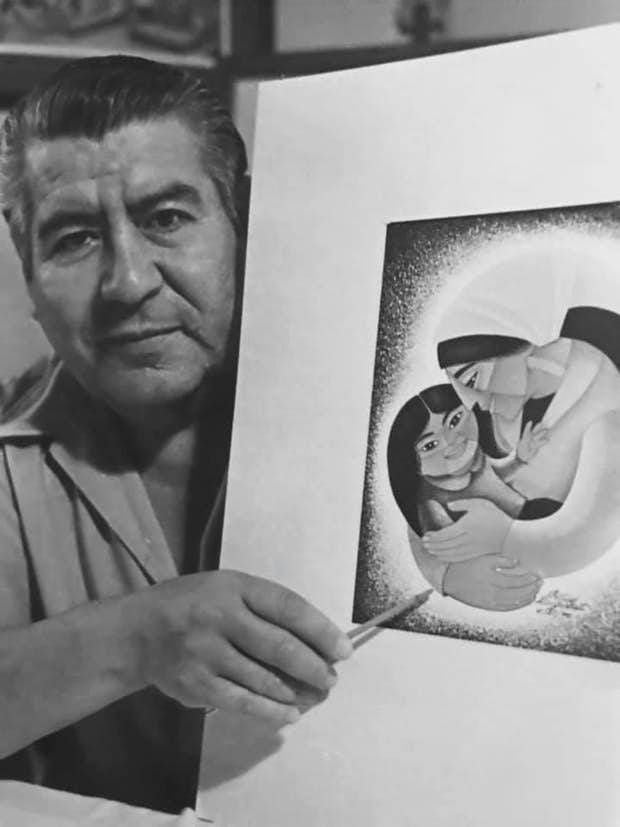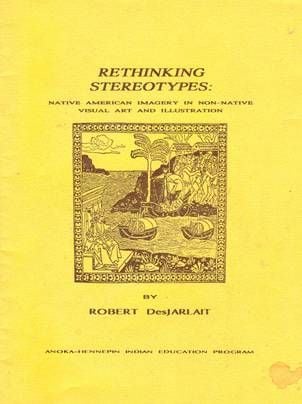Is the Land O'Lakes Maiden a Racist Trope or Symbol of Native Pride?
The Native American icon has a complex backstory.
High-profile Minnesota dairy brand Land O'Lakes made national headlines in April 2020 (not easy to do during a pandemic) when it quietly removed the focal point of its logo since 1928: a kneeling Native American woman known as Mia. Mere weeks later, the NFL team from Washington, D.C. finally agreed to retire its highly-controversial moniker. Just how similar are these two stories?
For Land O'Lakes, there had been a growing call by members of the public to retire the character for years. High-visibility incidents of racial trauma in recent years, including a horrifying epidemic of missing and murdered Indigenous women across North America, put such cultural artifacts under a very high-powered microscope. Mia, in her quaint, pastoral scene, seemed increasingly out of her element in a society actively wrestling with structural racism, white-centered narratives and perspectives, and cultural appropriation. For many, including Land O'Lakes, the time had come to let her go.
Many pushed back with some force, of course, perhaps because, for them, Mia was a symbol of a "simpler time." So the company's April decision renewed a cultural conversation about the roles of mascots. Then the killing of George Floyd by Minneapolis police intensified focus on American racism in the eyes, ears, minds and hearts of nearly the whole world. Aunt Jemima and Uncle Ben were quickly retired—just as Mia had been—and soon the long-maligned "Redskins" name will be added to that list.
But for one Minnesota family, Mia's story is personal, nuanced and complex.
Robert DesJarlait is the son of Patrick DesJarlait, the Red Lake Ojibwe artist who created the version of Mia that most of us have known since 1954. An artist himself, Robert explained the complex history of his father and Mia.

Patrick DesJarlait was a modernist in his fine art, creating lush, vibrant, almost Cubist scenes of Ojibwe community life in the first half of the 20th Century. As a commercial artist, Patrick made some pretty hefty contributions—including Mia and the much-beloved Hamm's bear—before returning to fine art. His work is featured at the Minnesota Museum of American Art in Saint Paul.
The 1950s saw a resurgence in interest in Indian themes in popular culture. With artistic pursuits such as the Indianist Movement (with its own surprising Minnesota ties), deep interest in Native American cultural elements peaked in the early 20th Century. But then the Jazz Age took the world by storm, and culture vultures looked elsewhere for inspiration.
Then after World War II, popular culture exploded with Native themes and characters, though only as two-dimensional foils for the latest craze: the American cowboy. A whole new film genre, Westerns, dominated the box office, and the brand-new television, with its voracious appetite for exciting content, ate up cowboy serials. Subdued by force and hidden away on remote reservations, Indigenous people could now be caricatures in white society's stories, portrayed largely by white actors, with no meaningful effort toward accuracy or empathy. Between the forced relocation of Native children to boarding schools aimed at erasing Indigenous culture and an American public obsessed with stereotypical representations of cowboy sidekicks or enemies, generations of Indigenous children were being raised to despise their own cultures and ancestry.
It was in this cultural milieu that young artist Patrick DesJarlait was tasked with reworking the Land O'Lakes maiden in 1954. Created by a white artist in 1928 and reworked once before in 1939, Mia needed Patrick's help. He pulled from his own life experience to put Mia in a real Minnesota place: The Narrows, where Upper and Lower Red Lake connect. He refined her character, updating her visage and attire, including Ojibwe beadwork designs on her dress. He brought the "O" in Land O'Lakes down so it looked almost like a halo on a Byzantine religious icon. In the end, Patrick's 1954 creation of Mia served as the virtually unchanged centerpiece of Land O'Lakes branding until her retirement in 2020. That's an extraordinarily long tenure in the branding world.
For Robert, Mia's removal was bittersweet. "I've never seen Mia as a stereotype. I know my dad didn't intend to create a stereotype... [He was] trying to show more the beauty of Native women." Robert acknowledges that perhaps, over time, she had devolved into a stereotype, not because of how his father rendered her, but because of how the public is thinking more critically about cultural matters these days.

Robert, who has been active in the anti-mascot movement since 1991, is no stranger to debates surrounding stereotypes. In 1993, he was commissioned to write a short book entitled, Rethinking Stereotypes: Native American Imagery in Non-Native Art and Illustration. In Robert's mind, Chief Wahoo of the Cleveland Indians is a true stereotype: exaggerated features, no cultural context and no Native input. Mia was the opposite: lovingly and accurately portrayed, with genuine cultural context and direct Native input.
Robert understands the Land O'Lakes decision, though he has very mixed feelings about it. He was widely featured in news articles on the matter and even got an op-ed published in the Washington Post. His motivation is not grounded in trying to bring Mia back to the butter box; instead, he wants others to know her true story and that of his father, Patrick.
"Artists always make statements with their art," Robert teases. He then reveals and explains the inspiration behind his own version of Mia, strikingly rendered with incredible attention to detail. Perhaps it's his way of achieving closure with this beloved, complex figure, and restoring to her a fully Native identity unencumbered by the sticky role of commercial functionality.
As problematic logos and mascots continue to fall into history, Minnesotans are increasingly thinking critically about the costs of appropriating other cultures in symbols and stereotypes. Nostalgia is a powerful force, plying us with the comforts of familiarity while blinding our objectivity to the damage our comfort may do to others. Land O'Lakes now plots its marketing future without Mia for the first time in nearly a century.
While Robert DesJarlait mourns Mia's loss, he celebrates his culture through his own unique fine art, depicting Ojibwe women as they lived, worked and dressed centuries ago. And Robert's Mia is not holding a butter box; she's holding manoomin, the wild rice sacred to the Ojibwe people.

This story is made possible by the Arts and Cultural Heritage Fund and the citizens of Minnesota.
